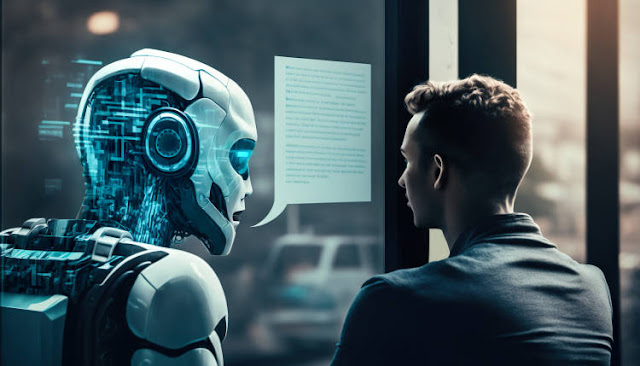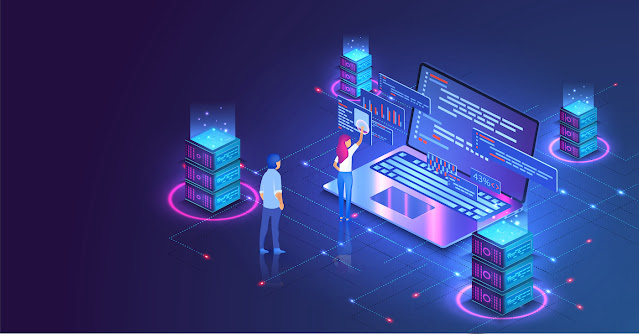The core goal of generative AI is to create entirely new, yet realistic data – text, images, code, audio, or even scientific data – that closely resembles the content it's been trained on. Unlike traditional AI focused on analyzing and classifying existing data, generative AI takes a leap forward by generating novel outputs that haven't been seen before.
What is the main goal of generative ai
Understanding the Engine of Creation
The Toolkit for Generating New Data
A World of Possibilities
Challenges and Considerations
The Future of Generative Creation
Understanding the Engine of Creation
Generative AI models achieve this feat through a process of learning from massive datasets. By ingesting vast amounts of existing content, these models identify patterns, relationships, and underlying structures within the data. This knowledge allows them to not just recognize existing patterns but also use them to generate entirely new creations that stay true to the learned style or characteristics..Follow for more amazing blogs visit All Worlds Wide
Imagine a generative AI trained on a collection of classic impressionist paintings. By analyzing the brushstrokes, color palettes, and subject matter typical of impressionism, the model can then generate entirely new paintings that evoke the impressionist style, potentially creating pieces that seem to belong alongside the works of the original masters.
The Toolkit for Generating New Data
Several key algorithms power generative AI, each with its own approach:
- Generative Adversarial Networks (GANs): These involve two neural networks in a constant game of one-upmanship. The generator creates new data, while the discriminator tries to distinguish the generated content from real data in the training set. This ongoing battle refines the generator's ability to produce increasingly realistic and creative outputs.
- Variational Autoencoders (VAEs): These models compress input data into a smaller, more manageable representation. This "latent space" captures the essence of the data. The model can then manipulate this latent space to generate new variations that retain the core characteristics of the original data. Imagine a VAE trained on images of different cat breeds. The model could then be used to generate new images of cats with unique combinations of traits, potentially creating breeds that don't exist yet!
- Transformer-based Models: These powerful architectures, originally designed for understanding human language, have found a new home in generative AI. By analyzing the relationships between words, these models can generate human-quality text formats like poems, code, scripts, or even musical pieces.
A World of Possibilities
The ability to create entirely new data unlocks a vast array of applications for generative AI:
- Fueling Creativity: Artists, designers, and musicians are using generative AI to explore new artistic styles, generate variations on existing designs, or even compose music in different genres. Imagine a fashion designer collaborating with an AI to generate new clothing patterns or a musician feeding their musical ideas into an AI to create a unique soundscape.
- Accelerating Discovery: In drug discovery and materials science, generative AI can analyze vast datasets of molecules or material properties to identify promising candidates for further research. This significantly reduces the time and cost associated with traditional research methods.
- Content Creation at Scale: Generative AI can create realistic product images, write engaging ad copy, or personalize marketing campaigns. This allows businesses to create high-quality content efficiently and tailor their messaging to specific audiences.
- Enhancing Existing Media: Generative AI can be used to enhance or edit existing images and videos. Imagine automatically removing unwanted objects from photos, repairing blurry images, or generating high-resolution versions of low-quality videos.
Challenges and Considerations
While generative AI offers tremendous potential, there are important challenges to address:
- Bias and Fairness: Generative models trained on biased data can perpetuate those biases in their outputs. Ensuring training data is diverse and representative is crucial to avoid generating discriminatory or offensive content.
- Copyright and Ownership: As AI generates content that closely resembles human-created works, questions arise regarding copyright ownership. Establishing clear guidelines for ownership and attribution is essential.
- Deepfakes and Misinformation: The ability to generate realistic-looking fake videos or audio recordings raises concerns about the spread of misinformation. Developing methods for detecting deepfakes and promoting media literacy is critical.
The Future of Generative Creation
As research continues to advance, generative AI holds the promise of even more transformative applications:
- More Powerful Models: Generative AI models will become more powerful and versatile, capable of creating even more complex and nuanced content.
- Explainable AI: Understanding how generative AI models arrive at their outputs will be crucial for building trust and ensuring responsible use.
- Human-AI Collaboration: Generative AI will likely become a powerful tool for human creativity, enabling artists, scientists, and others to explore new possibilities and push the boundaries of their fields.
In conclusion, generative AI is a rapidly evolving field with the potential to reshape how we create, discover, and interact with the world around us. By addressing the challenges and fostering responsible development, generative AI can be a powerful force for progress across various domains.









0 Comments